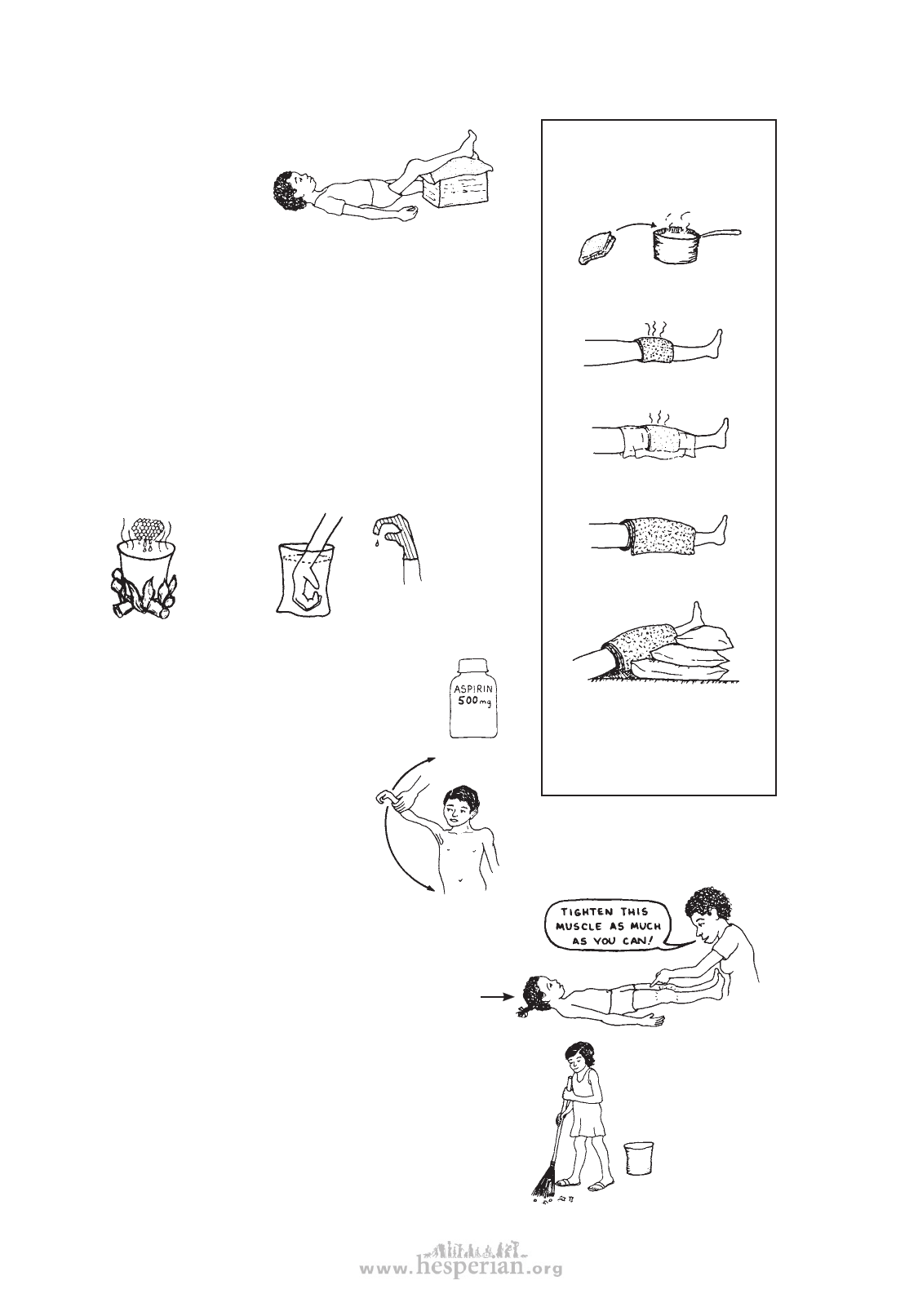
132 chapter 15
How to care for painful joints
1. REST THE JOINTS
The more painful the
joint, the more it needs
rest. Some movement is
important, but no forceful
exercise or heavy use of the
joint.
2. HEAT AND COLD
If joints are swollen, it
helps to keep them lifted up.
Applying heat (see side box) or cold to the joint often reduces pain
and makes motion easier. For cold, use packs of ice wrapped in a cloth
or towel for 10 or 15 minutes. Experiment to see which works better.
Usually cold works better on hot, inflamed joints and heat on sore,
stiff joints.
Hot wax can be used instead of hot water. Some specialists say that
it does not do more good than hot water, but persons with arthritis find
it very soothing.
Heat beeswax or paraffin
until it just melts (but
not too hot—test it first
on a finger).
Dip the hand
or painful
joints into
the hot wax.
Take it out.
The wax
will quickly
harden.
When
it cools,
dip it in
again.
3. PAINKILLERS
Usually aspirin or ibuprofen work best, because they
reduce both pain and inflammation. For doses and
precautions, see p. 134.
Note: For severe pain, splints to prevent
motion help reduce pain and prevent
contractures.
4. RANGE-OF-MOTION (ROM)
EXERCISES
It is important to move the joints through
their full range of motion at least twice a day
(especially if splints are used). If it hurts, apply
heat or cold first, and move them very slowly.
Do not force! (See Chapters 16 and 42.)
5. EXERCISES WITHOUT MOTION
These are exercises to strengthen muscles without bending the
painful joints. For example, a child with a painful knee can keep her
thighs strong by tightening her thigh muscles while her leg is straight.
She should hold the muscles tight until they get tired and begin
to tremble. This will strengthen them and keep them strong.
(See p. 140 and p. 368.)
6. CONTINUE DAILY ACTIVITIES
With most joint pain, it is important that the child remain fairly
active. She should try to continue with all daily activities that
do not strain or overwork the painful joints. Moderate activity is
usually recommended (except for acute infections or injuries, when
complete rest may be needed for several days).
HOT SOAKS
1. Boil water. Let it cool until
you can hold your hand in it
comfortably.
2. Wet a thick cloth or towel in
hot water and squeeze out
the extra.
3. Wrap the cloth around the
joint.
4. Cover the cloth with a piece
of thin plastic.
5. Wrap with a dry towel to
hold in the heat.
6. Keep the joint raised.
7. When the cloth starts to
cool, put it back in the hot
water and repeat.
Disabled village Children